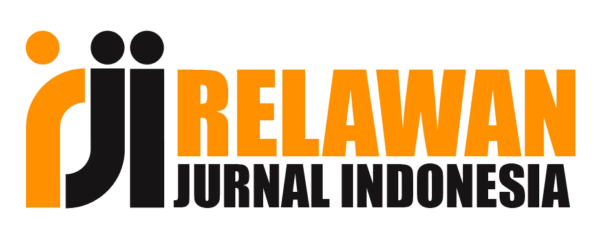Kelayakan Konten dan Tampilan Bahan Ajar Augmented Reality Pada Materi Teori Kinetik Gas
Abstract
ABSTRAK
Teori kinetik gas merupakan salah satu topik abstrak yang membutuhkan dukungan visual untuk mempelajarinya. Penelitian ini bertujuan menghasilkan bahan ajar menggunakan teknologi augmented reality pada materi teori kinetik gas yang layak digunakan oleh guru dan siswa kelas XI SMA. Bahan ajar yang dibuat adalah bahan ajar yang memadukan buku cetak dengan aplikasi pada smartphone berbasis Android sehingga dapat memvisualisasikan objek-objek abstrak dalam bentuk 3 dimensi atau video. Metode penelitian yang digunakan adalah metode Design and Reseach. Kelayakan bahan ajar ini diuji oleh tiga orang ahli konten, tiga orang ahli media, dan dua orang guru mata pelajaran fisika menggunakan instrumen yang diadaptasi dari Learning Object Review Instrument (LORI). Hasil yang didapatkan adalah bahan ajar memiliki persentase kelayakan konten 81 % dan persentase kelayakan tampilan 89%. Berdasarkan hasil uji kelayakan tersebut, dapat disimpulkan bahwa bahan ajar augmented reality yang dibuat layak.
ABSTRACT
Kinetic theory of gases is one of abstract topic that need visual support to learn. This research aims to design and create a kinetic theory of gases learning material using augmented reality technology for senior high school students. The learning material created is a combination between a printed book and an application for Android smartphone. It can be visualized abstract objects to 3 dimension form or video. The research method used in this research is Design and Research The feasibility test was doing by three content experts, three media experts, and two physics teachers using a Learning Object Review Instrument (LORI) 2.0 with result proper in content (81%) and visual design (89%). Based on the results, it can be concluded that the augmented reality learning material is proper.
Kata kunci : Bahan ajar, teori kinetik gas, augmented reality
Full Text:
PDF (Bahasa Indonesia)References
Astra, I. M., & Saputra, F. (2018). The Development of a Physics Knowledge Enrichment Book "Optical Instrument Equipped Augmented Reality" to Improve Students' Learning Outcome. IOP Conf. Series: Journal of Physics: Conf. Series, 1-8.
Billinghurst, M., & Dunser, A. (2012). Augmented Reality in The Classroom. Computer, 42-49.
Cai, S., Chiang, F.-K., Sun, Y., & Lin & Joe, C. (2016). Applications of augmented reality-based natural interactive learning in magnetic field instruction. Interactive Learning Environments, 1-14.
Daineko, Y., Ipalakova, M., & Tsoy, D. (2018). Development of Practical Tasks in Physics with Elements of Augmented Reality for Secondary Educational Institutions. L. T. De Paolis and P. Bourdot (Eds.):, 414-412.
Gani, A., Safitri, R., & Mahyana, M. (2017). Improving The Visual-Spatial Intellegence and Results of Learning of Junior High School Students' with Multiple Intellegences-Based Students Worksheet Learning on Lens Materials. Jurnal Pendidikan IPA Indonesia, 16-22.
Karagozlu, D., & Ozdamli, F. (2017). Student Opinions on Mobile Augmented Reality Application and Developed Content. TEM Journal, 660-270.
Kementrian Pendidikan dan Kebudayaan. (t.thn.). Peraturan Menteri Pendidikan dan Kebudayaan No. 22 Tahun 2016.
Kiryakova, G., Angelova, N., & Yordanova, L. (2018). The Potential of Augmented Reality to Transform Education into Smart Education. TEM Journal, 556-565.
Kularbphettong, K. (2019). Effectiveness of Enhancing Classroom by Using Augmented Reality Technology. Advances in Human Factors in Training, Educations, and Learning Sciences, 125-133.
Nesbit, J., Belfer, K., & Lealock, T. (2009, 01 01). Learning Onject Review Instrument (LORI) 2.0.
Nurhuda, Rusdiana, D., & Setiawan, W. (2017). Analyzing Students’ Level of Understanding on Kinetic Theory of Gases. IOP Conf. Series: Journal of Physics: Conf. Series, 1-6.
Plomp, T., Akker, J. v., Bannan, B., Kelly, A. E., & Nieveen, N. (2010). An Introduction to Educational Design Research. Enschede: SLO.
Primavera, I. C. (2014). Pengarun Media Audio-Visual (Video) terhadap Hasil Belajar Siswa Kelas XI pada Konsep Elastisitas. Prosiding Seminar Nasional Pendidikan IPA FITK UIN Syarif Hidayatullah (hal. 122-129). Jakarta: FITK UIN Syarif Hidayatullah.
Syamsuar. (2018). Pendidikan dan Tantangan Pembelajaran Berbasis Teknologi Informasi di Era Revolusi Industri 4.0. Jurnal Ilmiah Teknologi Pendidikan.
DOI: https://doi.org/10.17509/wapfi.v5i1.23448
Refbacks
- There are currently no refbacks.
Copyright (c) 2020 Sabila Nur Afifah, Winny Liliawati, Unang Purwana

This work is licensed under a Creative Commons Attribution-ShareAlike 4.0 International License.
The Journal Wahana Pendidikan Fisika http://ejournal.upi.edu/index.php/WapFi/ is licensed under a Creative Commons Attribution-ShareAlike 4.0 International License
The Journal WaPFi (Wahana Pendidikan Fisika).
All rights reserverd. pISSN 2338-1027 eISSN 2685-4414
Copyright © Faculty of Mathematics and Science Education (FPMIPA) Universitas Pendidikan Indonesia (UPI)










